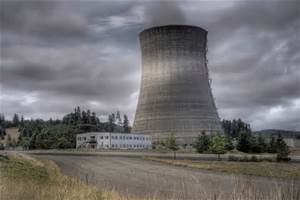I have been writing this blog for almost two years now. I have learned many new things about radioactivity and nuclear issues. Since this will be my five hundredth post, I thought that I would reflect on some of the important things that I have learned.
Nuclear weapons and nuclear power are tightly connected. It is doubtful that nuclear power would have enjoyed the early support and financing that it did without the fact that a strong nuclear industry was necessary but expensive for the major world powers who wanted nuclear weapons. Part of the hugely expensive cost of nuclear weapons development and manufacture was born by the creation of civilian nuclear power generation.
Nuclear power is enormously damaging to the environment. The mining and extraction of uranium is horribly polluting. If there are accidents, large areas can be contaminated and there is no way to really clean up the contamination. Nuclear waste is difficult to dispose of. There are no facilities available to permanently dispose of all the nuclear waste in the world. There is a thriving trade in the questionable and downright illegal attempts to get rid of nuclear waste which threaten the environment.
There is no safe level for exposure to radiation. Any radiation, whether natural or man-made has heath impacts. Raise the radiation level anywhere and you raise the health damage. One of the big problems with the recognition of this fact is that it can take decades for cancers to develop so it is hard to be certain exactly what caused a particular cancer. This makes it difficult to convince policy makers and the public about the danger of any nuclear power generation.
There is a huge amount of money involved in the nuclear power industry. It is unlikely that we would still be building nuclear reactors for power if not for the fact that individuals and companies can become very wealthy in the nuclear industry.
They are able to lobby policy makers for protection against bearing the whole cost of damage caused by nuclear accidents as well as loan guarantees and outright subsidies paid for by the taxpayers.
The nuclear industry is important in international affairs. Countries such as Japan, Russia and France have state supported nuclear industries that are part of their plans for economic expansion and international trade. With declining uranium production, Russia is betting that plutonium will be the nuclear fuel of the future and they are investing heavily in breeder reactors. The world has suffered from dependence on a few countries to provide the bulk of fossil fuels and will suffer in the future if Russia has a plutonium production monopoly.
The disaster at Fukushima was a wake-up call for the world on the dangers of nuclear power reactors. About one in five nuclear power reactors in the U.S. are built on the same flawed design as the Fukushima reactors. About one in five nuclear power reactors in the U.S. are under threat from flooding that will accompany the increasingly extreme weather driven by global climate change. A few more major nuclear accidents (which many experts believe are inevitable) will so damage the reputation of nuclear power generation that public support and private financing of nuclear power will disappear.
Nuclear power is not necessary. The cost of renewable energy is dropping and the cost of nuclear power is rising. This is a long term historical trend. With renewables and nuclear power reaching parity in costs now, in the future it will be much cheaper to provide electricity from renewable sources. If a fraction of the money that has been and is being spent on nuclear power were spent on renewables research, the transition from fossil fuels would happen much sooner.






